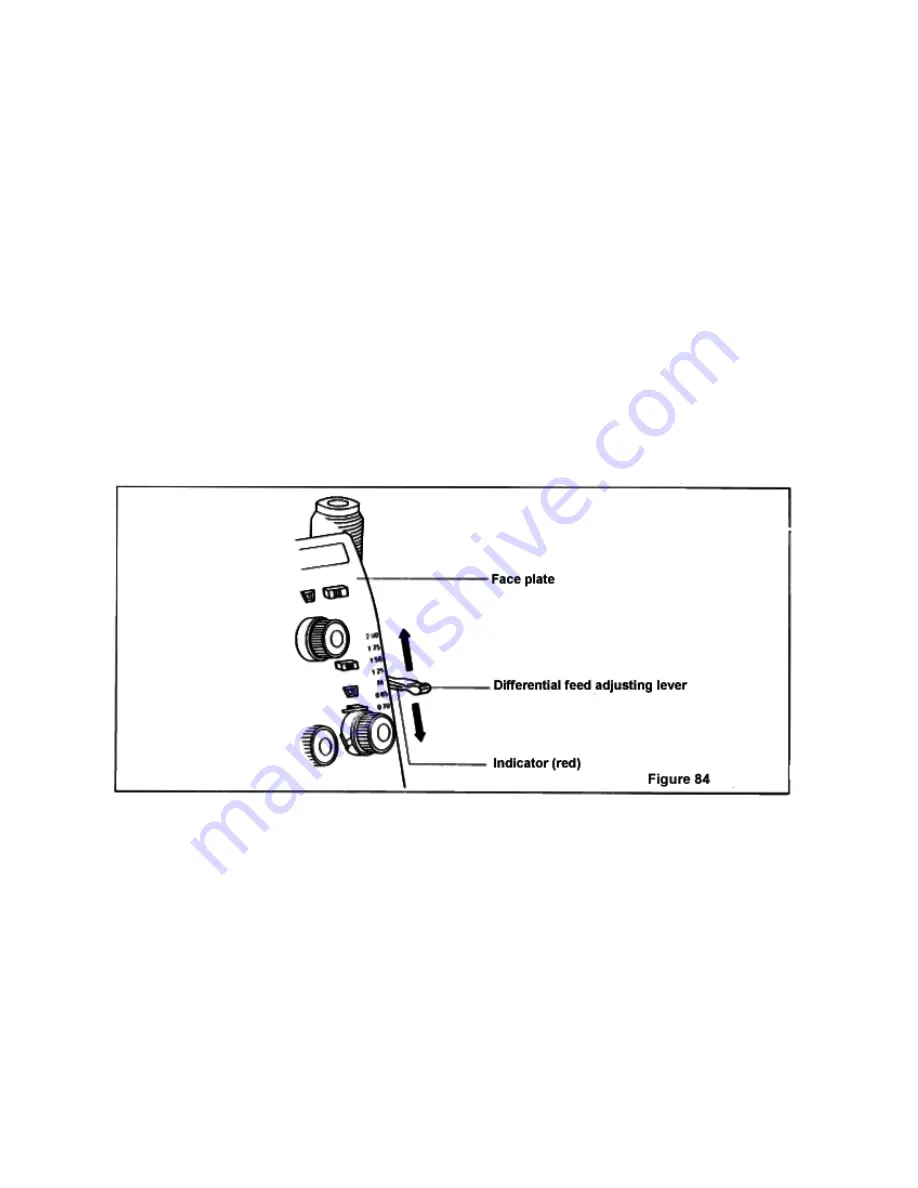
11 DIFFERENTIAL FEED ADJUSTMENT
The differential feed system is applicable when sewing either woven or stretch fabrics. The differential feed
adjusting lever is located on the upper right of the face plate. You may adjust the ratio of differential feed setting with
the range of 2.00 – 0.70 according to the fabric and desired results.
Differential feed adjustment
N
: Both feed dogs are feeding equally.
N –0.70 : The front feed dog will take shorter strokes than the back feed dog, causing the fabric to be slightly
stretched as it is sewn. This adjustment causes the fabric to pull taut as it enters the needle, preventing
puckers on lightweight fabrics. This setting can also be used to create a fluted edge or to add additional
stretch in active wear and swim wear.
N – 2.00 : The font feed dog will move farther than the back feed dog, causing the fabric to be compressed or
ruffled. This increased motion causes the fabric to feed into the needle more rapidly than it feeds out, in
effect easing the fabric. This will eliminate wavy seams in stretch fabrics or in bias grain – line areas. Also
use these settings to automatically ease areas where additional fullness is required, such setting in a
sleeve. At the maximum setting of 2.00 the differential feed can actually gather a lightweight fabric to
nearly double fullness. It is recommended that the longest stitch length setting be used to maximize the
gathering effects.
12 SPECIALTY THREADS
There are a growing number of specialty threads available today which will sew well on your Baby Lock serger.
They can be used to enhance appearance, add strength or elasticity, or create special effects, depending on the
characteristics of the thread you choose.
Keep in mind that quality and characteristics of a thread will vary greatly from one manufacturer to another. Some
specialty threads work well through the needle and loopers, while others may be too heavy to be threaded through
the needle and are for looper use only. Due to the thickness or coarseness of most of these threads, it is usually
necessary to loosen the tension disc that the specialty thread passes through.
Use the following chart as a guide in the use of specialty threads. As you become more confident with serger
sewing, experiment with additional threads and serging ideas.
28






















